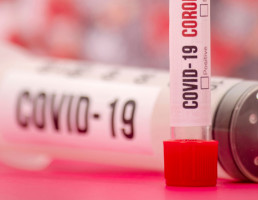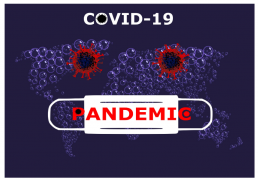COVID Testing
We have all heard that the key to preventing the virus from spreading is testing. But what types of tests are available and which one is the best?
As far as COVID testing there is not one test that is the BEST. It all depends on the person’s situation. The best way to determine which test is best for you is to work with your provider or pharmacist. Here is some information about the three different categories of tests that are available: PCR (a nasal or throat swab), Antigen (a nasal or throat swab) and an Antibody (a blood test).
PCR and Antigen are considered diagnostic tests as they can detect the virus earlier, while an antibody test detects antibodies later on. None are available to purchased directly by the consumer at this time.
PCR test is best to be used before or during symptoms. The virus is easily detectable within 7 to 10 days of illness. The test uses a process to test molecular breakdown of the virus. The Abbott ID Now test which delivers results within as little as 5 minutes is a PCR test.
An Antigen test is not reliable until symptoms exist. The peak or optimum testing time is about 3 to 5 days. The test is testing the coating of the virus.
The Antibody testing does not focus on checking the virus itself, but whether your immune system has built antibodies in response to the infection. It involves a small finger prick blood sample that takes at least 10 days to detect IgM antibody. Around 2 to 3 weeks later it can also detect IgG. These tests should be performed only on people that never had symptoms or it has been at least 7 days since their last symptom. If tested earlier, clinical reliability may be compromised.
More about Antibody testing…
There have been reports about fraudulent tests that are being sold. Here are a few things to watch for. As of now, there are no antibody tests on the market that have FDA approval, this will change with time. Testing kits are registering with the FDA and some have been granted an EUA (emergency authorization) by the FDA, but they are still not FDA approved. If you choose to receive an antibody test you will want to ask the person offering testing if they have checked and validated that the test has been registered with the FDA. In addition, tests that are on the market should have used PCR and not ELISA to validate their negative and positive results, as PCR is considered “Gold Standard” for COVID.
As far as the antibody test it tests for the antibodies IgM and IgG. IgM is the first antibody response to be detected. If IgG is detected and the level has become higher than IgM this means the maximum immunity response has occurred.
Keep in mind that these are qualitative tests not quantitative tests. This means it does not tell you how many antibodies, so it does not tell you if you are immune or how long you are immune. To measure immunity, you need to measure a titer, similar to a titer test performed after receiving your hepatitis B vaccines.
Therefore, Antibody testing does not tell you if you are immune but it does help in making decisions as far as when a person can stop being in quarantine and return to the workforce. It also helps with identifying donors for COVID-19 convalescent plasma.
In addition, look for the following to be labeled on a test:
1. This test has not been reviewed by the FDA
2. Negative results do not rule out SARS-CoV2 infection, particularly in those who have been in contact with the virus. Follow up testing with a molecular diagnostic should be considered to rule out infection in these individuals
3. Results from antibody testing should not be used as the sole basis to diagnose or exclude SARS-CoV2 infection or to inform infection status
4. Positive results may be due to past or present infection with non-SARS-CoV2 strains, such as coronavirus HKU1, NL63, OC43, 229E
What to Know About COVID-19
What is COVID-19?
COVID-19 is a disease that is transmitted by respiratory secretions. It is a novel, or new, strand of the coronavirus. COVID-19 is from the same family of MERS and SARS and thought to have originated as an animal coronavirus that infected people and then spread from people to people.
SARS-COV-2, which is a betacoronavirus, is the virus that causes COVID-19. COVID-19 is abbreviated for coronavirus disease 2019.
The disease classification has changed from an outbreak to epidemic to now a pandemic. The differences are how fast and quickly it can spread across a region. It is a world pandemic and as of today has spread to every continent except Antarctica. Because there is little to no immunity the virus is able to spread worldwide.
How is it transmitted?
COVID-19 is a respiratory infection that can be transmitted from respiratory droplets of infected people who cough or sneeze. Therefore, the CDC recommends people to stay at least 6 feet away from each other and not in direct contact. Some people may spread the virus prior to feeling symptoms. Additional ways of contracting the virus is from touching the surface or object that may have the virus and then touching your own mouth, nose or eyes.
Who is most at risk?
Since this virus is new, everyone is considered at risk. There are certain populations that are considered higher risk than others. This includes the elderly, infants, immunocompromised patients and anyone with an underlying condition, such as asthma or diabetes. This is a large population and it is important to be aware of the symptoms.
What are symptoms of COVID-19?
It may take days until symptoms do occur, anywhere from 2 to 14 days after exposure. Symptoms include a fever, dry cough, and itchy throat. Severe cases include difficulty breathing, requiring a respirator to help them breath. Call your doctor immediately if you think you have been exposed to COVID-19 and develop symptoms. The CDC states that emergency symptoms include: difficulty breathing or shortness of breath, persistent pain or pressure in the chest, new confusion or inability to arouse and bluish lips or face. Immediately seek medical help by calling your doctor if you think you have been exposed and are experiencing symptoms.

